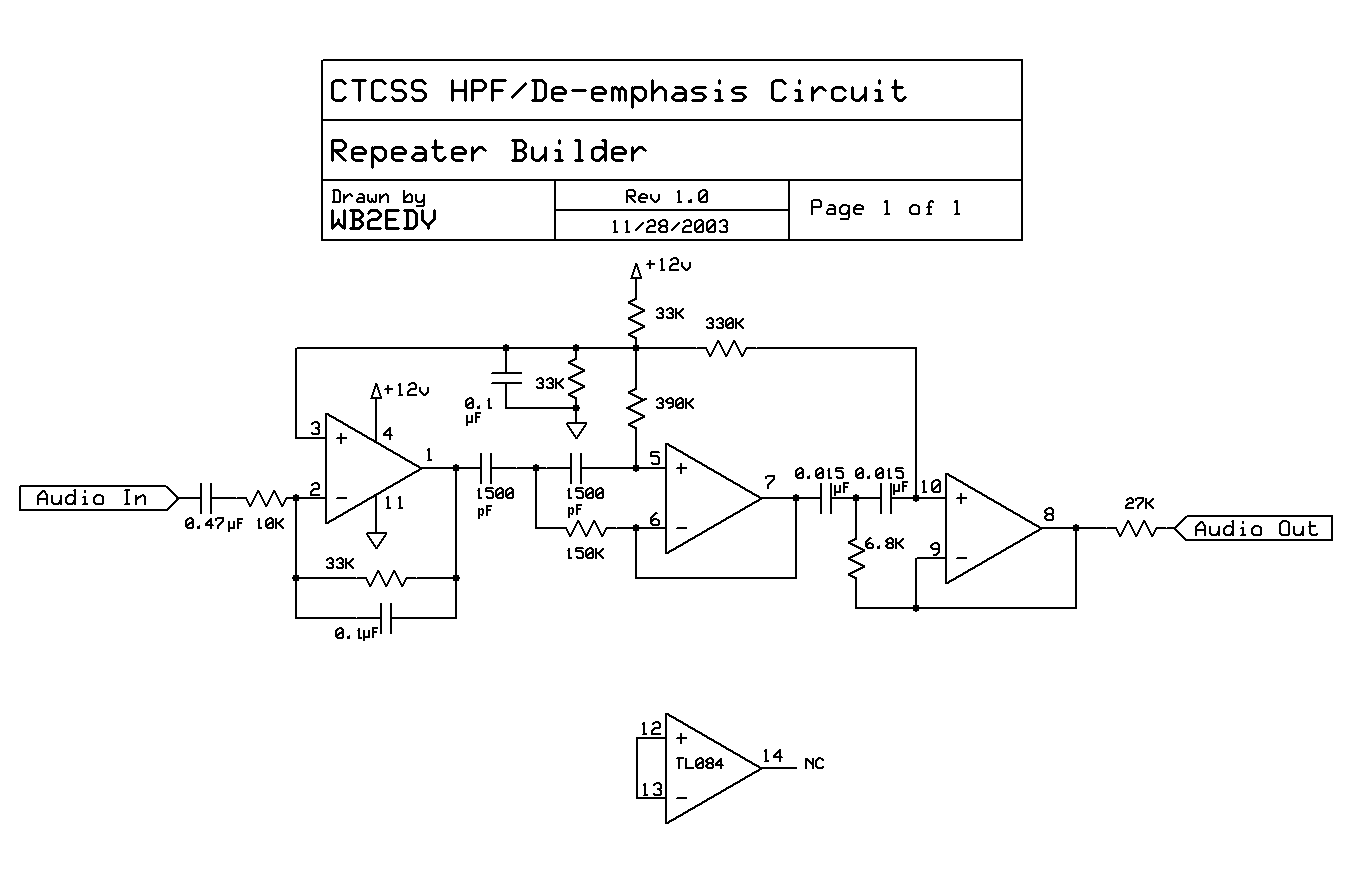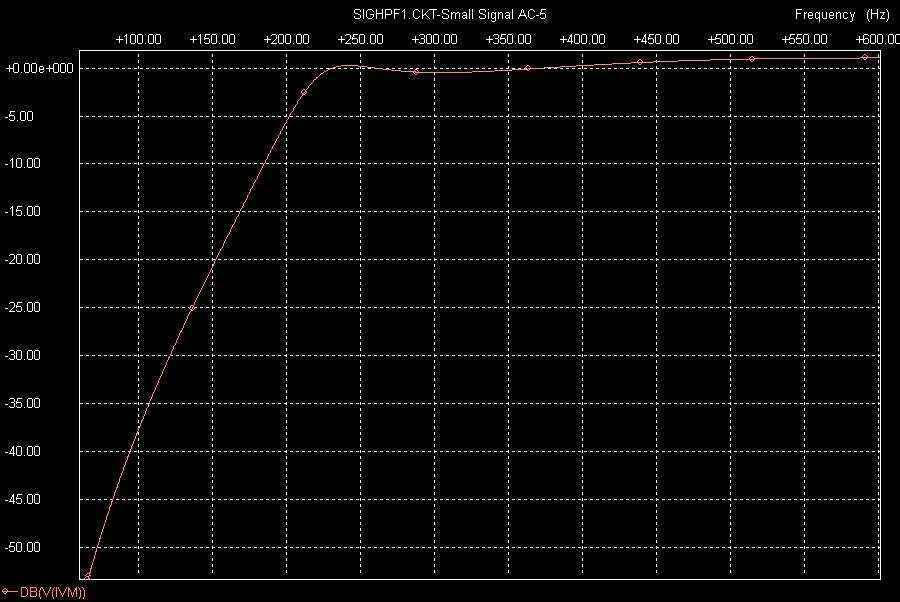
PL (CTCSS) Filter Construction Article
By Bob Dengler NO6B
I've seen a lot of posts on this subject but no posting of an actual filter schematic. Here's mine. It includes a de-emphasis section for flat audio response systems; omit if using pre-emphasized audio in your controller.
As others have pointed out, the performance of the high pass filter in the ComSpec TS-32 (and in the HPF-1 board, which is essentially the high pass section as a separate product) leaves a bit to be desired. Yes it will strip CTCSS tones nicely, but it as poor transient response and will "ring" around 400 Hz. This is the reason systems using this filter have a recognizable "boxy" sound.
For my system I decided to use the filter in the Sigtone C1116 decoder. I redesigned the filter to cut off a bit low in frequency (210 Hz) in order to slightly improve system audio quality, since I didn't need brick-wall filtering at the higher tone freqencies that I don't use.
In my particular application, the controller is an RLC-2A. I found that it didn't de-emphasize the RX audio well without increasing the value of the de-emphasis and input coupling capacitors.
Rather than hack the controller, I incorporated a workaround in my HPF circuit: I did the de-emphasis there with the first TL084 section, then I used a 27K resistor on the output stage to make the output high impedance. Doing this removes the 300 Hz high-pass rolloff that the 0.1 uF cap on the RLC-2A's port audio input would normally add to the response.
BTW, I found that if the 150 k resistor on pin 6 of the IC is changed to 168 k (150 k in series with 18 k, use 1% precision resistors), you can knock about half a dB off the passband ripple, down to 0.92 dB. Of course, the other resistors and capacitors need to be fairly precise too.
If you don't need to do all this, you can as originally stated omit the first audio stage. However, don't remove the 27K resistor altogether. Use at least a 220 ohm resistor on the output, otherwise the opamp may oscillate if capacitively loaded (as little as 100 pF can cause this).
Bob NO6B
Click on this image for a larger view.

HTML © Copyright November 2003, Kevin K Custer W3KKC
All Rights Reserved. Updated 22-Mar-2009.